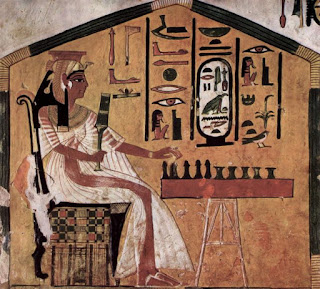
With the recent prisoner exchange between Hamas and the Israeli government - that saw Gilad Shalit return back home and with the return of 1,027 Palestinian men and woman, many people are scratching their heads as how the Israeli government who regard Hamas as a terrorist organization and not representatives of the Palestinian people, bargain with them and not the moderate Fatah Palestinian Authority based in the West Bank whom the whole world considers the 'real' representative faction of the Palestinian people.
Such a prisoner exchange deal with the help of Egypt really uplifted the image of Hamas and not Fatah. Also strange is that Marwan Barghouti Barghouti - "one of the most forceful proponents of a peaceful solution of the Israel-Palestine conflict,...has made his position abundantly clear from the Israeli jail where he serves five life sentences for his involvement in a number of terrorist attacks during the Second Intifada. He has repeatedly rejected further violence against Israel and believes that the two-state solution is the only way forward."
I believe Israel not only did dropped the ball but shows they really do not want lasting peace otherwise by freeing Barghouti, a real chance for peace could have been achieved. Israel`s endgame is not clear but their intentions are cloudy and shady. How long they want to drag this along for? The Palestinian generations are rising up and growing in numbers and will demographically overtake Israel. A two-state solution has to occur and cannot wait. Legitimate leaders for peace has to be released and their voices heard.
The missed opportunity to free Marwan Barghouti
For Netanyahu, the greatest danger is a strong Palestinian leader who unifies the Palestinian people behind the two-state solution.By Carlo Strenger
Haaretz
Published 15:52 28.Oct.11
After the great joy of seeing Gilad Shalit back home, many questions have been asked: will caving in to Hamas lead to further abductions? Hasn’t the Shalit deal strengthened hardline Hamas at the expense of pragmatic Fatah? Could Israel have done this earlier?
A New York Times editorial asked why Netanyahu is able to negotiate and cut a deal with the extremist Hamas, but not with the pragmatic Fatah. But there is an even more urgent question that, for some reason, was almost not addressed: Why did Israel miss the golden opportunity to let Marwan Barghouti out of prison?
Most importantly, a number of polls have showed that Barghouti is the most popular potential contender for the presidency of the Palestinian Authority. He would win with a great margin if he ran against Ismail Haniyeh, and could be a strong unifier of all Palestinian camps.
Ostensibly, Israel should have a strong interest in liberating Barghouti: Abbas is now 76 years old; his political career is coming to an end, and Barghouti is the only strong candidate who could continue Abbas’s work towards implementing the two-state solution. He would strengthen Fatah at the expense of Hamas.
So why didn’t the Netanyahu government liberate Barghouti in the Shalit deal? This would have been a unique opportunity. It would not have required the dramatic act of a presidential pardon that has been suggested in the past and Israel would have gained a strong and reliable partner for negotiation in the future.
The answer, I think, is simple, and also applies to the NYT editorial’s question why Netanyahu can cut a deal with Hamas, but not with Fatah: Netanyahu doesn’t want the two-state solution, because believes that it is dangerous to Israel’s long-term survival.
Netanyahu does not state these views openly now, because this would put him on head-on confrontation with the international community. Hence he pays lip service to the two-state solution while doing everything to prevent its implementation.
Ultimately, Netanyahu and Hamas have one common interest: to keep pragmatic Fatah weak. This is why Hamas didn’t insist on including Barghouti in the Shalit deal. Its leadership knows that Barghouti would give Fatah a resounding victory in the next elections, and therefore prefers him in prison.
So does Netanyahu. The greatest danger for him is a strong Palestinian leader who unifies the Palestinian people behind the two-state solution. If Barghouti would be elected Palestinian president with a strong mandate, and would state his commitment to the two-state solution clearly Netanyahu’s true colors would be exposed both to the Israeli electorate and to the international community.
Netanyahu has, time and again, said that he doesn’t believe in a territorially contiguous Palestinian state. He is entitled to his views, but he should be required to make clear that he is leading Israel down a path that will destroy the two-state solution forever. He should have the integrity to state his own long-term vision that seems to be one bi-national state west of the Jordan. Because no Palestinian leader will ever accept what Netanyahu, at most, is willing to concede: a number of disconnected enclaves around the West Bank’s major population centers, some form of Bantustan-like entity; but not a viable state.
Netanyahu has been playing hide-and-seek both with the international community and with Israel’s electorate. Along the way he has driven Israel into unprecedented isolation.
If he does so out of deeply held beliefs, and not just for political survival, he should have the decency to tell the world and Israel’s electorate who he is: an ideological right-winger with an apocalyptic worldview. Then, at least, the world will know whom they are dealing with; and Israelis will have to decide, whether they want to live on the sword in a pariah state forever, or whether they want to elect a leadership that can lead Israel towards peace.
After the great joy of seeing Gilad Shalit back home, many questions have been asked: will caving in to Hamas lead to further abductions? Hasn’t the Shalit deal strengthened hardline Hamas at the expense of pragmatic Fatah? Could Israel have done this earlier?
A New York Times editorial asked why Netanyahu is able to negotiate and cut a deal with the extremist Hamas, but not with the pragmatic Fatah. But there is an even more urgent question that, for some reason, was almost not addressed: Why did Israel miss the golden opportunity to let Marwan Barghouti out of prison?
Barghouti is one of the most forceful proponents of a peaceful solution of the Israel-Palestine conflict, and he has made his position abundantly clear from the Israeli jail where he serves five life sentences for his involvement in a number of terrorist attacks during the Second Intifada. He has repeatedly rejected further violence against Israel and believes that the two-state solution is the only way forward.
Most importantly, a number of polls have showed that Barghouti is the most popular potential contender for the presidency of the Palestinian Authority. He would win with a great margin if he ran against Ismail Haniyeh, and could be a strong unifier of all Palestinian camps.
Ostensibly, Israel should have a strong interest in liberating Barghouti: Abbas is now 76 years old; his political career is coming to an end, and Barghouti is the only strong candidate who could continue Abbas’s work towards implementing the two-state solution. He would strengthen Fatah at the expense of Hamas.
So why didn’t the Netanyahu government liberate Barghouti in the Shalit deal? This would have been a unique opportunity. It would not have required the dramatic act of a presidential pardon that has been suggested in the past and Israel would have gained a strong and reliable partner for negotiation in the future.
The answer, I think, is simple, and also applies to the NYT editorial’s question why Netanyahu can cut a deal with Hamas, but not with Fatah: Netanyahu doesn’t want the two-state solution, because believes that it is dangerous to Israel’s long-term survival.
Netanyahu does not state these views openly now, because this would put him on head-on confrontation with the international community. Hence he pays lip service to the two-state solution while doing everything to prevent its implementation.
Ultimately, Netanyahu and Hamas have one common interest: to keep pragmatic Fatah weak. This is why Hamas didn’t insist on including Barghouti in the Shalit deal. Its leadership knows that Barghouti would give Fatah a resounding victory in the next elections, and therefore prefers him in prison.
So does Netanyahu. The greatest danger for him is a strong Palestinian leader who unifies the Palestinian people behind the two-state solution. If Barghouti would be elected Palestinian president with a strong mandate, and would state his commitment to the two-state solution clearly Netanyahu’s true colors would be exposed both to the Israeli electorate and to the international community.
Netanyahu has, time and again, said that he doesn’t believe in a territorially contiguous Palestinian state. He is entitled to his views, but he should be required to make clear that he is leading Israel down a path that will destroy the two-state solution forever. He should have the integrity to state his own long-term vision that seems to be one bi-national state west of the Jordan. Because no Palestinian leader will ever accept what Netanyahu, at most, is willing to concede: a number of disconnected enclaves around the West Bank’s major population centers, some form of Bantustan-like entity; but not a viable state.
Netanyahu has been playing hide-and-seek both with the international community and with Israel’s electorate. Along the way he has driven Israel into unprecedented isolation.
If he does so out of deeply held beliefs, and not just for political survival, he should have the decency to tell the world and Israel’s electorate who he is: an ideological right-winger with an apocalyptic worldview. Then, at least, the world will know whom they are dealing with; and Israelis will have to decide, whether they want to live on the sword in a pariah state forever, or whether they want to elect a leadership that can lead Israel towards peace.






















































































































































